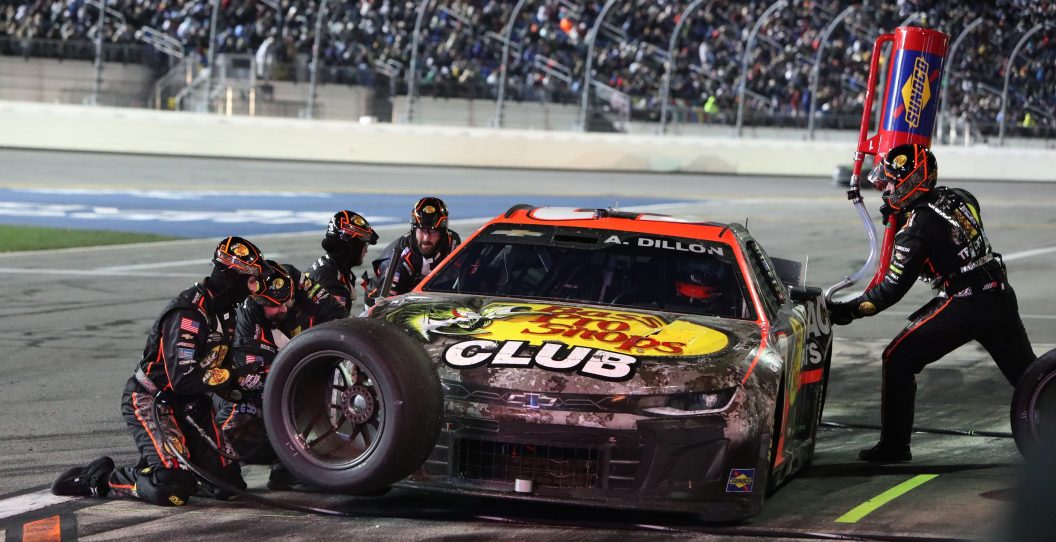After the Daytona 500, NASCAR will be taking a look into the fuel-saving tactics the teams used in the race.
Videos by FanBuzz
Throughout the first 170 laps of the Daytona 500, it was noticeably visible that drivers were driving close to half-throttle most of the time to save fuel. The strategy was used to minimize time spent on pit road.
During stage 1 of the race, the leaders were running laps times over 51 seconds. The pace they were running was around two seconds slower than Joey Logano's pole winning time set in qualifying. Generally, a pack of cars at Daytona International Speedway will run over two seconds faster than a car riding without any drafting help.
Senior vice president of competition for NASCAR, Elton Sawyer, spoke about the matters during a call Tuesday morning on SiriusXM NASCAR Radio.
"Ultimately, we want to drop the green flag on the race and they're racing as hard as they can until they drop the checkered flag," Sawyer said. "There's some strategy in between there, and we will definitely take a much deeper dive into this particular situation and the strategy that goes into it."
#NASCAR is taking a “much deeper dive” into the fuel-saving strategy Cup teams employed during Monday’s Daytona 500. Elton Sawyer discussed this today on @SiriusXMNASCAR https://t.co/R2xLh2RJYe
— Dustin Long (@dustinlong) February 21, 2024
One potential solution being tossed around is lowering the stage lengths to where a pit stop is not required for fuel during the stage. For example, you may see the Daytona 500 run the first two stages only having 40 laps each as opposed to 65 laps. With the fuel window being 42-44 laps, it would allow teams to run the entire stage without having to pit for fuel.
The one issue with this scenario is drivers are still going to be saving fuel. The name of the game is spending the least amount of time on pit road. Whether it is under the green flag or yellow flag, spending the least amount of time fueling the car will make the pit stop quicker. This is what will give a driver track position.
NASCAR will probably not lower the lengths of the stages. The call to action they will be looking at is trying to see if there is a way to make fuel flow faster from the gas can to the car during a pit stop. If the fuel is transmitted into the car faster, it will close down the gap in times on fuel-only pit stops.
This is the first step in NASCAR's in-depth look at fuel-saving strategies at the superspeedway races. This is not an easy fix, but NASCAR will need to try and find a solution so the drivers can race hard all race and not just the final fuel run of the race.
This concern could grow after next week at Atlanta Motor Speedway if the same strategy is used for the Ambetter Health 400 on Sunday at 3:00 P.M. EST.
More: NASCAR Responds to Daytona 500 Finish Controversy
